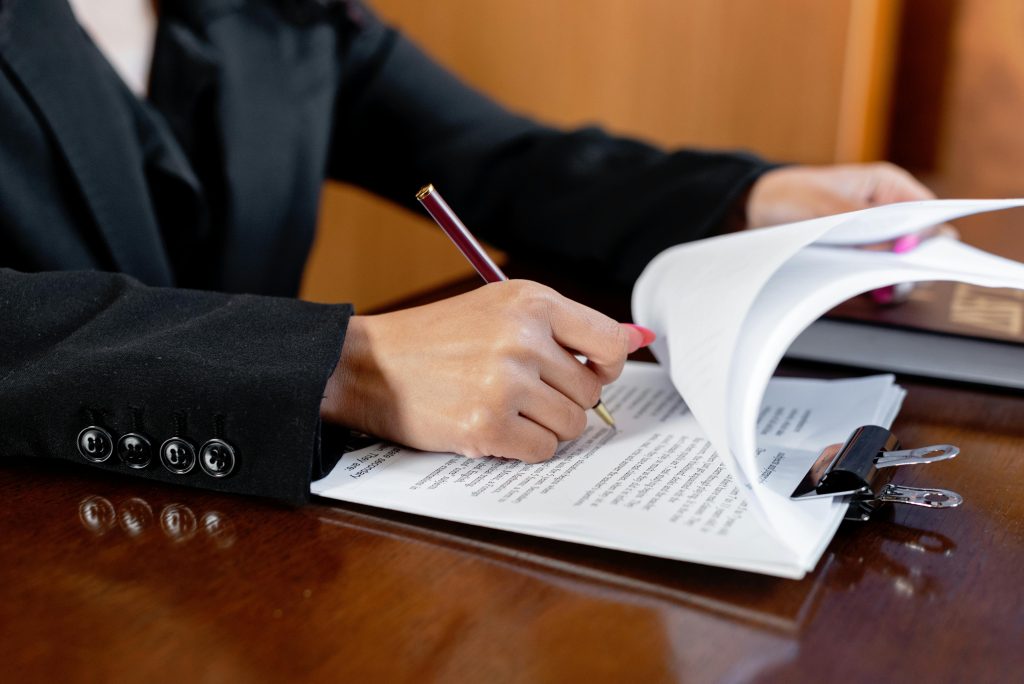Introduction
Every organization, property manager, or service provider knows that urgent issues don’t follow a 9-to-5 schedule. A leaking pipe at 2 AM, a power outage on a holiday, or a tenant locked out of their unit can’t wait until the next business day. That’s where structured after-hours urgent issue handling processes come into play.
After-hours emergencies are unique because they combine urgency with reduced resource availability. Unlike routine issues that can be queued for the morning, these situations require rapid triage, smart escalation, and efficient communication — all while balancing safety, costs, and customer satisfaction.
In this first half, we’ll break down why after-hours urgent issues require special handling, the typical scenarios that arise, and the step-by-step processes organizations put in place to manage them effectively. In the second half, we’ll explore advanced practices, technology solutions, case studies, and future trends.
Why Handling After-Hours Urgent Issues Matters
1. Safety First
After-hours incidents often involve heightened risk because fewer staff are on-site. Immediate response can prevent injuries or protect lives.
2. Protecting Property and Assets
A broken sprinkler system or HVAC outage left unattended overnight can cause extensive damage by morning.
3. Compliance Requirements
Industries like healthcare, hospitality, and housing must meet 24/7 service obligations. Failure to respond promptly may trigger penalties or lawsuits.

4. Tenant/Customer Satisfaction
For property managers, a tenant who feels abandoned during an after-hours emergency is unlikely to renew their lease. Quick and reliable responses build trust.
5. Cost Management
Although after-hours repairs can be costly, proper triage avoids unnecessary dispatches (e.g., sending a plumber at midnight for a non-critical drip).
Common Types of After-Hours Urgent Issues
- Plumbing Failures
- Burst pipes, sewage backups, or water heater failures.
- Electrical Problems
- Power outages, sparking outlets, or tripped breakers in critical areas.
- HVAC Malfunctions
- No heating during freezing conditions or failed air conditioning during heatwaves.
- Security Concerns
- Broken locks, alarm malfunctions, or access control failures.
- Fire or Life-Safety System Alerts
- Smoke alarms, sprinkler activations, or carbon monoxide detectors.
- Lockouts or Access Issues
- Tenants or staff locked out of buildings or rooms.
- Noise, Disturbances, or Safety Complaints
- After-hours disturbances requiring building staff or security intervention.
Core Processes for Handling After-Hours Urgent Issues
1. Clear Definition of “Urgent” vs. “Non-Urgent”
The first step is establishing criteria for urgency. Staff and tenants need to know which issues qualify for after-hours intervention.
- Urgent Examples: No heat in winter, gas leak, electrical sparks, flooding.
- Non-Urgent Examples: Dripping faucet, minor appliance malfunction, routine maintenance requests.
Best Practice: Provide tenants/customers with written guidelines or a decision tree (e.g., “If your safety or property is at risk, call the emergency line immediately”).
2. Centralized After-Hours Reporting System
Organizations must ensure there’s always a reliable way to report issues after hours.
- Dedicated Emergency Hotline: Calls forwarded to on-call staff or third-party answering services.
- Mobile Apps/Portals: Tenants log emergencies through a platform that auto-routes alerts.
- IoT Monitoring Systems: Sensors (water, fire, HVAC) trigger automatic alerts to maintenance teams.
Pro Tip: Redundancy is key. Always provide at least two reporting options (phone + app).
3. Initial Call Handling and Information Gathering
When an issue is reported:
- Answering Service or On-Call Staff follow a scripted checklist:
- Nature of emergency.
- Exact location (building, unit, room).
- Severity (active leak vs. damp floor).
- Contact details for follow-up.
- Verification Questions: Some issues sound urgent but are not. Scripts help determine urgency (e.g., “Is water actively flowing or just dripping?”).
4. Triage and Decision-Making
The information collected is triaged by an on-call manager or maintenance lead.
- Decision Framework:
- Immediate danger to health/safety → Dispatch immediately.
- Risk of escalating damage → Dispatch within hours.
- Inconvenience, but no safety/property risk → Schedule for next business day.
- Escalation Levels:
- Level 1: Lockouts or minor security → Handled by security staff.
- Level 2: Utilities (plumbing, electrical) → On-call technician dispatched.
- Level 3: Life-safety → Emergency services (fire, police, utility company) + internal response.
5. Dispatch of On-Call Personnel or Vendors
After triage, appropriate responders are mobilized:
- Internal On-Call Technicians: Rotating shifts ensure 24/7 coverage.
- External Contractors: Pre-vetted vendors with Service Level Agreements (SLAs).
- Emergency Services: For gas leaks, fires, or security threats.
Best Practice: Keep updated vendor rosters with guaranteed response times.
6. Immediate Containment and Temporary Solutions
When full repairs aren’t feasible at night, staff may perform containment measures:
- Shutting off water valves.
- Resetting electrical breakers.
- Boarding broken windows.
- Providing temporary heaters or fans.
Containment reduces risks until a full repair team can address the issue during regular hours.
7. Communication and Transparency
Occupants want to know that their issue is being handled. Clear communication builds trust.
- Real-Time Updates: “Technician en route, ETA 45 minutes.”
- Progress Reports: If repair extends overnight, explain interim solutions.
- Follow-Up Commitment: Confirm next-day inspection for permanent resolution.
Example: A property manager emails residents: “Heating system failed at 11 PM. Portable heaters provided. Vendor scheduled at 7 AM for full repair.”
8. Documentation in CMMS or Work Order Systems
Every after-hours incident is logged digitally:
- Issue details (who reported, when, what happened).
- Actions taken (triage decisions, dispatch records).
- Costs incurred (after-hours contractor rates, temporary equipment).
This documentation supports insurance claims, regulatory compliance, and performance analysis.
9. Post-Issue Review
The process doesn’t stop once repairs are made. Organizations conduct reviews:

- Was the issue correctly classified as urgent?
- Could preventive maintenance have avoided it?
- Was response time within SLA targets?
- Are updates needed for protocols or vendor rosters?
Goal: Each incident becomes a learning opportunity for refining after-hours response processes.
Supporting Systems for After-Hours Issue Management
- Computerized Maintenance Management Systems (CMMS): For digital work order tracking.
- Automated Notifications: SMS/email alerts for staff and tenants.
- Vendor Management Portals: Keep response times and SLA compliance visible.
- IoT Sensors + AI Alerts: Automate detection (e.g., water sensors texting managers instantly).
- Cloud-Based Dashboards: Leadership monitors issues even when off-site.
1. Leveraging Third-Party Call Centers
Not every organization can afford a dedicated in-house team for 24/7 coverage. Third-party after-hours call centers fill this gap.
- How They Work: Calls to the emergency hotline are routed to a trained answering service. Agents follow scripts to collect incident details and escalate only truly urgent cases.
- Benefits:
- Reduces staff burnout.
- Filters non-emergencies so technicians aren’t dispatched unnecessarily.
- Provides professional, consistent tenant interaction.
- Best Practice: Call centers should be given custom triage scripts aligned with company policies and escalation thresholds.
2. AI-Driven Triage and Smart Alerts
Artificial Intelligence (AI) is increasingly integrated into after-hours workflows.
- AI-Powered Chatbots: Tenants can report issues via apps, and chatbots ask clarifying questions to determine urgency.
- Smart Prioritization: Machine learning analyzes historical data to predict which issues are most likely to escalate.
- IoT Integration: Sensors (e.g., water leak detectors, HVAC monitors) feed real-time data into AI systems that trigger alerts automatically.
Example: An AI system detects an unusual spike in water usage at 1 AM. It automatically shuts off the water valve, alerts maintenance, and notifies tenants — preventing flooding before staff even arrive.
3. Staff Training and On-Call Readiness
After-hours incidents often rely on a small pool of on-call staff. Proper training is essential.
- Cross-Training: Staff should be able to handle multiple types of emergencies (basic electrical, plumbing, HVAC troubleshooting).
- Soft Skills: De-escalation, communication, and empathy are as important as technical skills.
- Preparedness Kits: On-call staff should have access to tools, spare keys, and temporary fix supplies to minimize trips.
Tip: Organizations often rotate on-call responsibilities to balance workload and prevent burnout.
4. Building Redundancy in Vendor Relationships
Emergencies don’t always happen at convenient times. Having multiple vendors pre-vetted prevents delays.
- Backup Lists: Maintain at least two or three contractors per specialty (plumbing, electrical, HVAC).
- Service Level Agreements (SLAs): Contracts should guarantee maximum response times (e.g., two hours for critical emergencies).
- Performance Tracking: Log vendor response and quality metrics in a vendor management system.
5. Communication Strategies That Build Trust
Transparency is often the deciding factor in whether tenants or customers view an after-hours response as successful.
- Real-Time Updates: Automated SMS/email alerts: “Technician en route — ETA 30 minutes.”
- Expectation Setting: If a full repair isn’t possible until morning, explain clearly: “Containment measures are in place. Full replacement scheduled at 8 AM.”
- Follow-Up: After resolution, a personalized email or call thanking tenants for patience goes a long way.
6. Cost Management for After-Hours Incidents
One of the biggest challenges is balancing cost with responsiveness.

- Triage Efficiency: Avoid sending vendors out for issues that can wait until morning.
- Temporary Fixes: Apply cost-effective containment measures (e.g., shutting valves, boarding windows) until regular hours.
- After-Hours Premiums: Budget specifically for higher contractor rates during nights and weekends.
Pro Tip: Review historical data to forecast average after-hours repair costs and allocate annual emergency budgets.
Industry-Specific After-Hours Processes
Property Management (Residential & Commercial)
- Scenario: Tenant reports “no heat” at midnight.
- Response:
- Hotline → Call center triage confirms urgent (temperature below safe threshold).
- On-call HVAC vendor dispatched.
- Portable heaters provided until system restored.
Healthcare Facilities
- Scenario: Medical equipment malfunctions at 2 AM.
- Response:
- On-call biomedical engineer alerted via automated paging.
- Backup equipment activated until repairs completed.
- Incident logged for compliance review.
Manufacturing Plants
- Scenario: Overnight production line stops due to motor burnout.
- Response:
- On-call technician dispatched.
- Temporary containment (rerouting workflow, activating redundant equipment).
- Full repair scheduled for day shift with vendor support.
Data Centers
- Scenario: Cooling system failure at 3 AM.
- Response:
- IoT sensors trigger high-temperature alert.
- Failover chillers activated automatically.
- Emergency HVAC crew dispatched.
Future Trends in After-Hours Urgent Issue Handling
The future points toward greater automation and predictive systems.
AI-Powered Prediction
- AI models will predict which systems are most likely to fail during high-stress periods (e.g., HVAC units during heatwaves).
Robotics and Remote Assistance
- Drones or robots may handle containment actions like closing valves, resetting breakers, or inspecting rooftops before staff arrive.
Digital Twins
- Virtual replicas of facilities allow teams to simulate emergency responses remotely before executing repairs.
Smart Escalation Rules
- AI will escalate only high-probability emergencies to humans, drastically cutting false alarms.
Challenges and Risks
Despite advances, after-hours issue handling comes with challenges:
- Staff Fatigue: On-call rotations can burn out employees if not managed well.
- False Alarms: IoT sensors may produce unnecessary alerts without calibration.
- Limited Vendor Availability: High demand during storms or widespread outages can overwhelm vendors.
- Cost Pressure: After-hours premiums and overtime costs strain budgets.
- Human Error: Stress and fatigue at night increase the risk of misjudgments.
Best Practices for Organizations
- Define Clear Protocols
- Provide tenants and staff with decision trees for what counts as urgent.
- Invest in Technology
- Deploy IoT sensors, AI-driven triage, and automated notifications.
- Strengthen Vendor Networks
- Maintain diversified vendor pools with binding SLAs.
- Rotate On-Call Staff Fairly
- Prevent burnout with balanced scheduling.
- Document Everything
- Use CMMS/work order systems to log incidents for compliance and insurance.
- Conduct Post-Mortems
- Review after-hours incidents to identify process gaps and training needs.
Conclusion
Handling after-hours urgent issues isn’t just about sending someone out in the middle of the night. It’s about having structured processes, reliable communication, and the right technology in place.

By combining triage, vendor partnerships, AI-powered alerts, staff readiness, and transparent communication, organizations can turn after-hours emergencies from a chaotic scramble into a controlled, professional response. The future of after-hours issue handling will lean even more on predictive analytics, automation, and digital twins — but the core principle will remain: safety and trust come first.
FAQs
1. What counts as an after-hours urgent issue?
Anything that threatens safety, property damage, or critical systems (e.g., flooding, no heat, gas leaks, electrical sparks).
2. How do organizations avoid unnecessary after-hours calls?
Through clear tenant guidelines, scripted call center triage, and smart AI-based filtering.
3. Are after-hours repairs always more expensive?
Yes, due to contractor premiums and overtime, but triage and temporary fixes help manage costs.
4. What tools support after-hours response?
CMMS, IoT monitoring, automated notifications, vendor management portals, and cloud dashboards.
5. How do you prevent staff burnout on after-hours duty?
Rotate shifts fairly, use third-party call centers, and ensure strong support systems.
6. Will AI replace human responders?
Not entirely. AI and IoT will reduce false alarms and improve detection, but human expertise is still critical for complex repairs.

